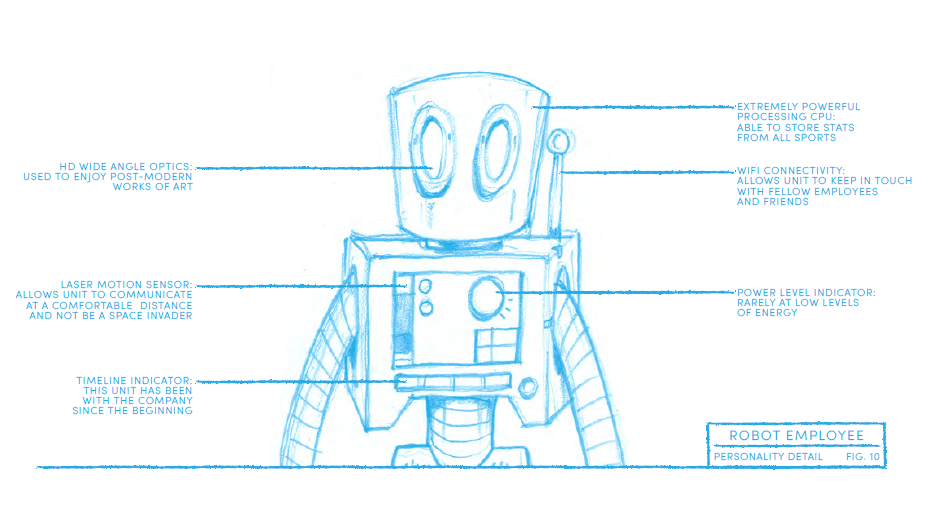How to Liven Up Your Employee Handbook
When creating your employee handbook, we know your top priority is to communicate your organization’s policies and procedures. Nobody’s trying to swindle you or lead you to believe otherwise. That said, some handbooks make employees feel like another number (read: a number that can be fired for many reasons). Other handbooks inspire employees to feel like part of a team that happens to have rules to enable everyone to work together successfully.
We prefer the latter.
Here are three ideas to make your employee handbook less of a snoozefest.
- Tell your origin story
- Explore your company timeline
- Highlight your people
Origin Story
Sometimes it’s helpful to tell your employees how it all started — to describe the lightbulb moment that set things in motion. Maybe your founder has a unique story or your company idea was born in an unusual way. Backstory is interesting! People love personal tidbits; it makes them feel like an insider who knows a secret.
Here are some ways to add some oomph to your origin story:
- Set the scene – Was the idea born during a dentist appointment or at a now-defunct favorite lunch spot? Share something memorable about the early days to paint a visual picture of how it all began.
- Showcase your founder – What was going on in their life when they started the company? Was there an obstacle to overcome? Did a specific mentor or book encourage them to take the leap of faith?
- Share a pivotal moment – How did you get your first customer? When or how did you meet your co-founder? Did a certain moment change the course of the business?
- Then vs. now – What products and/or services did you initially offer, and has it remained the same? Describe your first “office” compared to your current setup.
Your origin story can be cut and dry, or you can use the opportunity to say something memorable — to share something funny, to humanize your founder(s), to emphasize the heart and effort that got you where you are today. A little vulnerability goes a long way.
No matter your story, there’s a fun way to tell it.

Company Timeline
Similar to an origin story, establishing your company’s timeline is a great way to convey your backstory in an engaging format. You might consider including these items in your company timeline:
- When the idea was born / the company became official
- Release dates for new products or services
- Key hires, sales, investments, or acquisitions
- Milestone metrics, like when you hit X number of sales or customers
- Marketing initiatives, such as when you rebranded or launched a specific campaign
- When new offices opened or you reached a certain number of employees
- Other significant moments, like winning an award, attending a big tradeshow, being featured in a noteworthy publication, etc.
You can also include things that happened in the greater world to give a sense of perspective — like the year of a specific invention, when your founder’s favorite movie was released, or when Mars added the blue M&M (1995).
If you’re struggling for ideas, browse back through your blog, check out old press, or sit down with some of your long-time employees.
People Profiles
It’s good to introduce your employees to some of the people behind the magic. We’ve all read (or skimmed) our share of executive bios highlighting education, work experience, and award nominations. Consider talking about your people in a way that’s casual and approachable.
- Use the name they go by or even share some nicknames
- What are some lesser-known facts about them (e.g., they were on the high school chess team or once won a pancake-eating contest)?
- What are some of their weaknesses or fears?
- Do they have any hobbies that might surprise people?
The best leaders build trust by setting an example of openness and vulnerability. They make themselves relatable and show that they’re human, too.
Keep in mind that profiles don’t have to be limited to C-level employees. Other creative examples include:
- Founders
- Board members or investors
- Affinity group leaders
- Employee(s) of the month (easy to keep up-to-date with a digital handbook)
- HR team
- Company mascots or pets
You could even create a profile for a fictional “you” (i.e. the person reading the handbook). So many options!
The Recap
Employee handbooks cover a lot of important content, so some parts will be more formal than others. However, your cultural content is one area where you have room for creative expression — so take advantage!
Here’s another piece in our culture-first handbook series:
For more tips on how to spruce up your employee handbook, check out our free eBook: How to Write a Culture-First Employee Handbook.